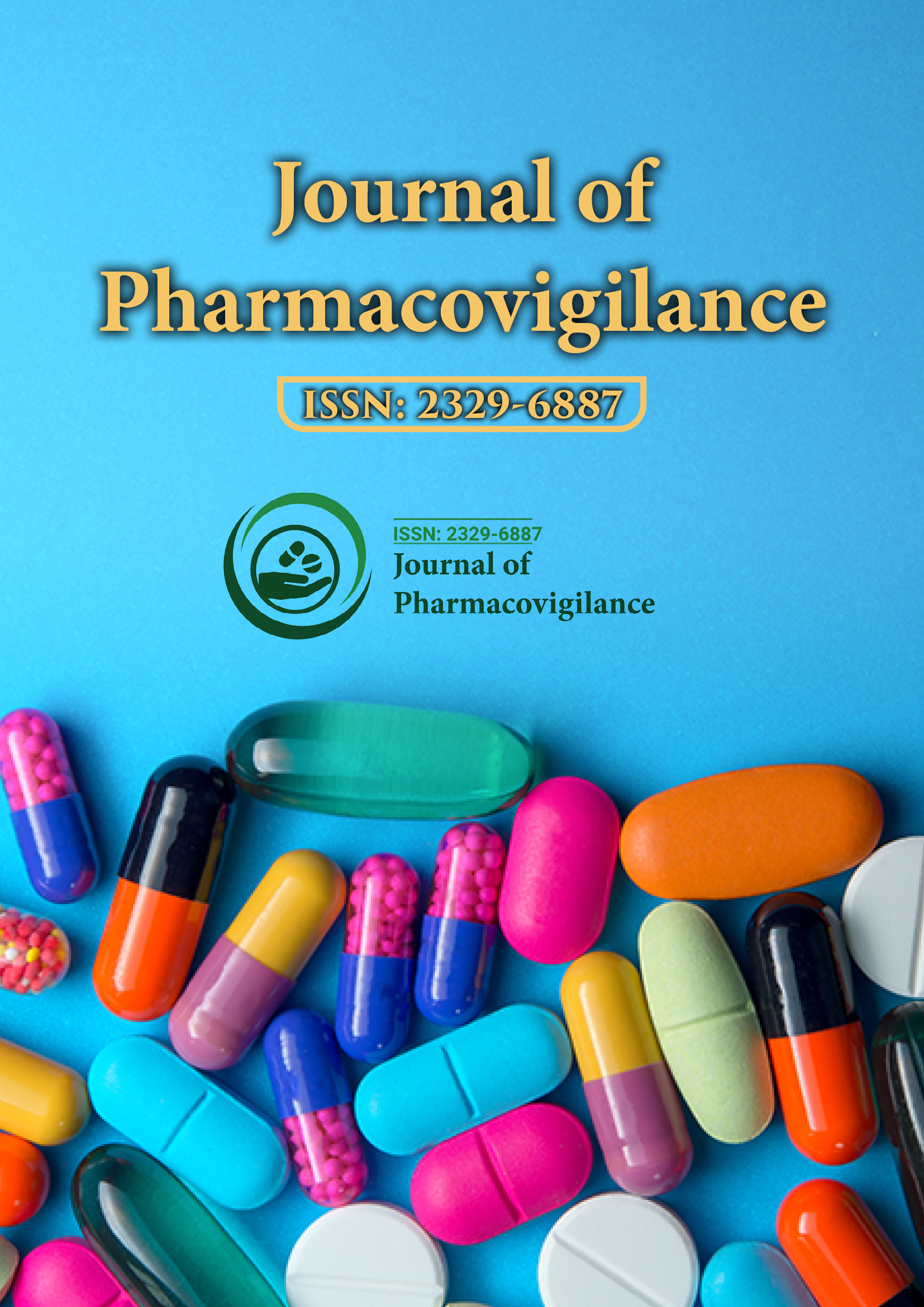Indexed In
- Open J Gate
- JournalTOCs
- The Global Impact Factor (GIF)
- RefSeek
- Hamdard University
- EBSCO A-Z
- OCLC- WorldCat
- Publons
- Euro Pub
- Google Scholar
Useful Links
Share This Page
Journal Flyer

Open Access Journals
- Agri and Aquaculture
- Biochemistry
- Bioinformatics & Systems Biology
- Business & Management
- Chemistry
- Clinical Sciences
- Engineering
- Food & Nutrition
- General Science
- Genetics & Molecular Biology
- Immunology & Microbiology
- Medical Sciences
- Neuroscience & Psychology
- Nursing & Health Care
- Pharmaceutical Sciences
Commentary Article - (2025) Volume 13, Issue 2
Advancing Public Health Through Vigilant Drug Safety Assessment
Sophia Grant*Received: 26-May-2025, Manuscript No. JP-25-29715; Editor assigned: 28-May-2025, Pre QC No. JP-25-29715; Reviewed: 11-Jun-2025, QC No. JP-25-29715; Revised: 18-Jun-2025, Manuscript No. JP-25-29715; Published: 25-Jun-2025, DOI: 10.35248/2329-6887.25.13.517
Description
Ensuring the safety of medications once they reach patients is an ongoing responsibility critical to maintaining public health. Although extensive testing is done before a drug is authorized for use, the controlled nature of these studies means some adverse effects might only become apparent during widespread clinical application. Continuous assessment of medication safety after market introduction allows healthcare providers and regulators to identify and address these issues promptly.
The foundation of this process lies in collecting detailed information about any adverse effects that patients experience. Reports can come from doctors, pharmacists, patients themselves, or pharmaceutical manufacturers, all of whom contribute valuable insights. This information is gathered into centralized databases, where it undergoes thorough examination to detect emerging patterns or unexpected events that may indicate a safety concern. Creating an environment that supports and encourages thorough reporting is fundamental. Healthcare professionals must be trained and motivated to document adverse events accurately. Patient education also plays a key role in helping individuals recognize symptoms that may be related to medication use and understand the importance of communicating these experiences.
The effectiveness of this monitoring depends largely on the quality and quantity of reports received. Educating healthcare professionals about the importance of documenting adverse reactions encourages more comprehensive reporting. Patients also benefit from awareness campaigns that empower them to report side effects directly or through their healthcare providers. The availability of digital tools and online portals has further simplified the reporting process, making it more accessible to all involved parties.
Data analysis techniques have evolved considerably, enabling more effective processing of large and diverse datasets. Advanced algorithms can identify signals within complex information, guiding experts to potential risks that warrant further investigation. Collaboration among regulatory authorities around the world allows sharing of safety data, which is particularly valuable for detecting rare adverse effects that may only be evident when larger populations are monitored.
Despite these improvements, challenges remain. Some adverse events may be underreported due to lack of awareness or uncertainty about their relation to medication use. Variations in healthcare infrastructure and reporting standards between regions can also impact data consistency. Addressing these issues requires ongoing efforts to harmonize practices, enhance education, and improve reporting systems.
The ethical commitment to patient safety underpins all drug safety assessment activities. Maintaining vigilance helps prevent harm, supports informed clinical decision-making, and sustains public trust in medical treatments. Open communication regarding risks and benefits ensures that patients and healthcare providers can make choices based on comprehensive and current information. Post-marketing drug surveillance is a foundational aspect of medication safety that helps identify and manage risks not fully understood before approval. By leveraging education, technology, and cooperation, healthcare systems can uphold patient safety and foster confidence in therapeutic options.
Conclusion
Vigilant drug safety assessment after approval is essential for safeguarding patients and promoting effective therapies. Through cooperation, technological innovation, and education, healthcare systems can respond swiftly to emerging safety concerns and continually improve medication use. Skilled professionals must carefully assess the information to distinguish true risks from coincidental events. By maintaining vigilance, the healthcare community can respond promptly to emerging safety issues, adapt treatment recommendations, and ensure that medications continue to offer benefits that outweigh risks.
Citation: Grant S (2025). Advancing Public Health Through Vigilant Drug Safety Assessment. J Pharmacovigil. 13: 517.
Copyright: © 2025 Grant S. This is an open-access article distributed under the terms of the Creative Commons Attribution License, which permits unrestricted use, distribution and reproduction in any medium, provided the original author and source are credited

